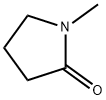Squalane
Synonym(s):Squalane;2,6,10,15,19,23-Hexamethyltetracosane;Perhydrosqualene;Robane;Cosbiol
- CAS NO.:111-01-3
- Empirical Formula: C30H62
- Molecular Weight: 422.81
- MDL number: MFCD00008953
- EINECS: 203-825-6
- SAFETY DATA SHEET (SDS)
- Update Date: 2025-12-17 09:50:34

What is Squalane?
Chemical properties
viscous colourless liquid
The Uses of Squalane
Squalane has been used: as solvent in the synthesis of Europium dibenzoylmethide triethylammonium, brightest known triboluminescent (TL) material;as lubricant for fatty acid surfactant films adsorbed on iron oxide surfaces
The Uses of Squalane
health foods
The Uses of Squalane
Lubricant, transformer oil. Ingredient of watch and chronometer oils. Perfume fixative. In pharmacy and cosmetics as skin lubricant, ingredient of suppositories, carrier of lipid-soluble drugs.
The Uses of Squalane
squalane is an excellent moisturizer and lubricant, it softens and smoothes the skin while also replenishing skin lipids. Its compatibility with skin lipids can be attributed to the fact that human sebum is made up of 25 percent squalane. Squalane has traditionally been obtained by hydrogenation of shark liver oil or other natural oils. Components found in fish oils may reduce skin irritation and allergic responses. It can also be derived from plant sources or synthetically manufactured.
Definition
A saturated hydrocarbon.
General Description
Dielectrophoretic deformation of thin liquid fillm of squalane has been investigated. Microfluidized squalenes are efficient adjuvants, eliciting both humoral and cellular immune responses.
Purification Methods
Purify squalane by fractional distillation in vacuo or evaporative distillation. It is soluble in pet ether, *C6H6, Et2O and CHCl3, slightly soluble in alcohols, Me2CO and AcOH but insoluble in H2O. Small quantities can be purified by TLC as for squalene below. It is used as a marker in GLC and HPLC. [Staudinger & Leupold Helv Chim Acta 15 223 1932, Sax & Stross Anal Chem 29 1700 1951, Mandai et al. Tetrahedron Lett 22 763 1981, Beilstein 1 IV 593.]
Properties of Squalane
| Melting point: | -38 °C (lit.) |
| Boiling point: | 176 °C/0.05 mmHg (lit.) |
| Density | 0.81 g/mL at 25 °C (lit.) |
| refractive index | n |
| Flash point: | 424 °F |
| storage temp. | 2-8°C |
| solubility | chloroform: soluble100mg/mL, clear |
| form | neat |
| color | Clear Colourless |
| Water Solubility | Not miscible or difficult to mix in water. |
| Merck | 14,8767 |
| BRN | 776019 |
| Stability: | Stable. Combustible. Incompatible with strong oxidizing agents. |
| CAS DataBase Reference | 111-01-3(CAS DataBase Reference) |
| NIST Chemistry Reference | Tetracosane, 2,6,10,15,19,23-hexamethyl-(111-01-3) |
| EPA Substance Registry System | Squalane (111-01-3) |
Safety information for Squalane
| Signal word | Warning |
| Pictogram(s) |
 Exclamation Mark Irritant GHS07 |
| GHS Hazard Statements |
H315:Skin corrosion/irritation H319:Serious eye damage/eye irritation H335:Specific target organ toxicity, single exposure;Respiratory tract irritation |
| Precautionary Statement Codes |
P261:Avoid breathing dust/fume/gas/mist/vapours/spray. P304+P340:IF INHALED: Remove victim to fresh air and Keep at rest in a position comfortable for breathing. P305+P351+P338:IF IN EYES: Rinse cautiously with water for several minutes. Remove contact lenses, if present and easy to do. Continuerinsing. P405:Store locked up. |
Computed Descriptors for Squalane
| InChIKey | PRAKJMSDJKAYCZ-UHFFFAOYSA-N |
New Products
Indole Methyl Resin tert-butyl 9-methoxy-3-azaspiro[5.5]undecane-3-carboxylate Boc-His(Boc)-OH 2-CTC Resin 4-Chloro-7-tosy1-7Hpyrrolo[2,3-d]pyrimidine 5,7-Dibromo-1H-indole 2,5-dichloro-N-hydroxy-4,6-dimethylpyridine-3-carboximidamide 2,2-Dimethoxy-7-azaspiro[3.5]nonane hydrochloride 4-chloromethyl-5-methyl-1,3-dioxol-2-one (DMDO-Cl) R-2-BENZYLOXY PROPIONIC ACID 1,1’-CARBONYLDIIMIDAZOLE 1,1’-CARBONYLDI (1,2-4 TRIAZOLE) N-METHYL INDAZOLE-3-CARBOXYLIC ACID 4-((2-hydroxyethyl)thio)benzoic acid 1-(TERT-BUTOXYCARBONYL)-2-PYRROLIDINONE Methyl 6-methylnicotinate 3-Pyridineacrylic acid tert-Butyl carbazate TETRAHYDRO-2H-PYRAN-3-OL 2-((4-morpholinophenylamino) (methylthio) methylene) malononitrile 3-(4-morpholinophenylamino)-5-amino-1H-pyrazole-4-carbonitrile 2,4-dihydroxybenzaldehyde 1,3-Diethyl-1,3-Diphenylurea Methyl 2-methylquinoline-6-carboxylateRelated products of tetrahydrofuran








You may like
-
 Squalane 95.00% CAS 111-01-3View Details
Squalane 95.00% CAS 111-01-3View Details
111-01-3 -
 Squalane CAS 111-01-3View Details
Squalane CAS 111-01-3View Details
111-01-3 -
 Squalane CAS 111-01-3View Details
Squalane CAS 111-01-3View Details
111-01-3 -
 Squalane 95% CAS 111-01-3View Details
Squalane 95% CAS 111-01-3View Details
111-01-3 -
 Squalane CAS 111-01-3View Details
Squalane CAS 111-01-3View Details
111-01-3 -
 Squalane CAS 111-01-3View Details
Squalane CAS 111-01-3View Details
111-01-3 -
 Squalane CASView Details
Squalane CASView Details -
 Squalane CAS 111-01-3View Details
Squalane CAS 111-01-3View Details
111-01-3
